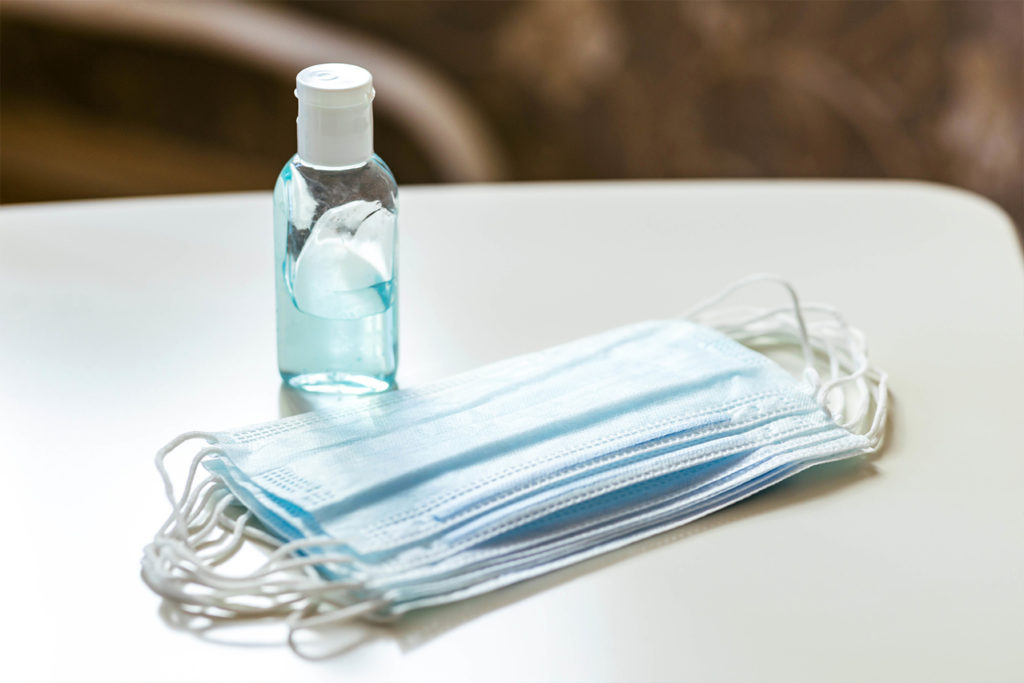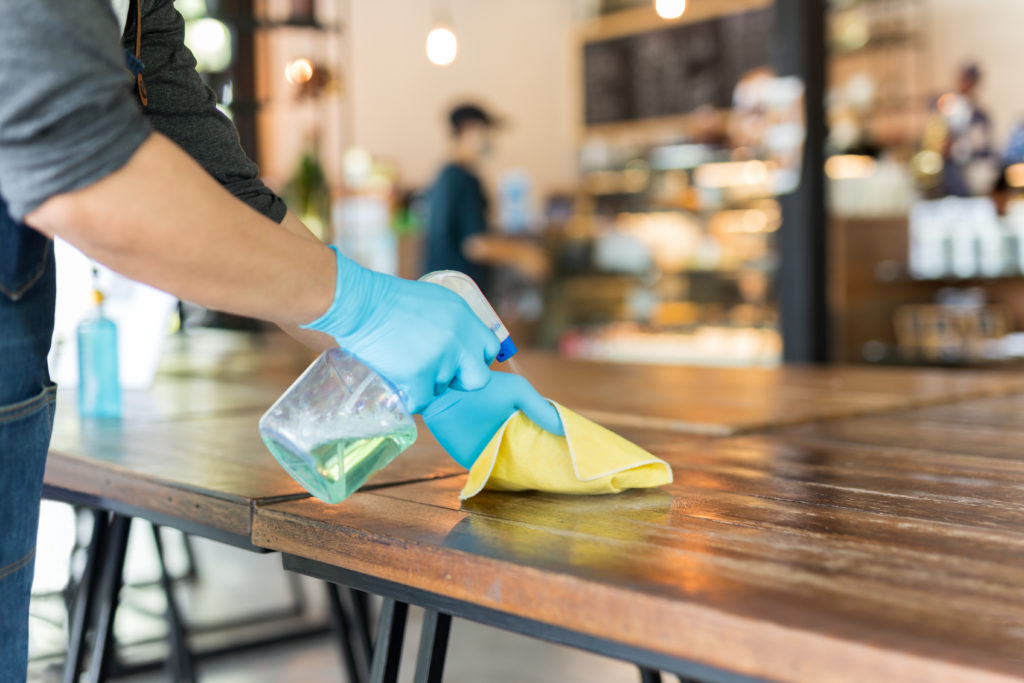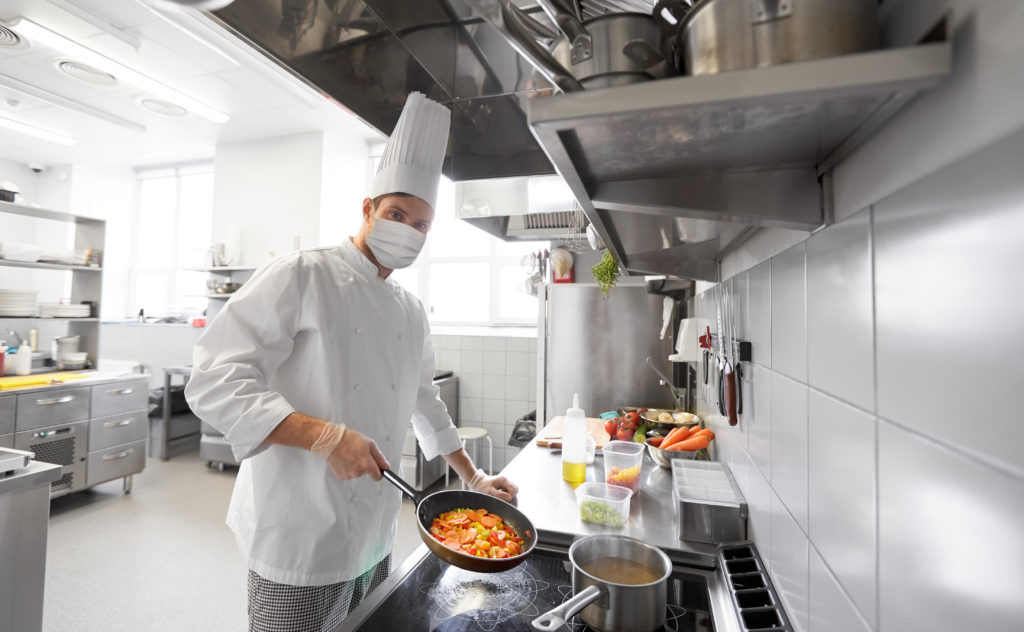At long last, restaurants and other businesses are slowly starting to re-open from the COVID-19 lockdown. However, it will be anything but business as usual when things do open back up.
The bright side is that people are looking forward to eating out again.
But health and safety, previously taken for granted, are now top-of-mind for customers. It’s safe to say that they will demand business facilities be held to higher standards of sanitation and cleanliness than could ever have been imagined.
Now more than ever, it will be critical for restaurants to demonstrate through clear action that they are creating a safe environment for patrons. It’s quite possible that frequent, visible cleaning will be necessary even for seldom-touched restaurant areas that are already clean.
So how should restaurants adapt to this new normal? What would make a difference to customers? Here are just some of the ways you can incorporate visible sanitation in your establishment:
Redesign Your Dining Space
Before restarting business, restaurant operators will need to comply with guidelines and regulations laid out by the CDC, FDA and their local governments on dining arrangements. In fact, the National Restaurant Association (NRA) recently released this handy guide for restaurants that are reopening.
It recommends that establishments design a process to ensure that patrons maintain separation in all waiting areas and while seated.
Tables will need to be rearranged so that they meet the requirement of six feet of distance between patrons. Changing to a reservation-only system could be one way to better plan spacing requirements. Additionally, restaurants can limit the number of people in particular sections and put up dividers between tables.
Open air outdoor seating may also be something to consider, especially if indoor areas are at risk. According to Krissi Hewitt, Director of Institutional Research and Strategic Initiatives at North Carolina School of Science and Mathematics, “Buildings that have not been properly serviced to maintain appropriate circulation, filtration, humidity and temperatures can contribute to higher amounts of microorganisms moving through the system.”
Essentially, microbes spread more easily in closed environments where air is recirculated and there is improper filtration. This is one of the main reasons why offices, cruise ships and subways are such infection hotspots. Since FDA and NRA guidelines now recommend fewer tables indoors, it probably makes sense to expand outdoor seating where possible.
What if your restaurant is in a strip mall without a beautiful outdoor seating area? Consider turning the sidewalk or part of the parking lot into a dining area. Designing creative dining experiences with few resources is part of what makes working in the culinary field so exciting. It’s the “art” in the culinary arts. And with warmer weather approaching, customers may even prefer sitting outside and enjoying the sun.
Keep Sanitation Products Within Eyesight
When a restaurant is operating at full gear during peak dining hours, it can be difficult to stay constantly vigilant. One of the ways to build trust and maintain your emphasis on visible sanitation is by keeping cleaning products available and within easy reach of customers.
By providing disinfecting wipes, hand sanitizer, gloves, and masks in easy-to-access locations, you can empower customers to take an extra step with respect to their sanitation needs at their table – without waiting for the staff to come around. Restaurants can also consider placing contactless hand sanitizing stations for guests as they enter and leave the building.

It’s important to educate and keep open communication with restaurant staff as these processes are implemented. Students who graduate from our culinary and pastry programs are prepared with the know-how to create a safe and sanitary environment in any foodservice business.
When customers see that you are prioritizing their safety by making cleaning products available to them, it’s possible they’ll be more likely to view your brand favorably and continue dining on-premise.
Make Cleaning a Theatrical Experience
Let’s face it, these are unprecedented times we are all living through, and the pandemic is likely to change consumer behavior in many ways that seem strange now.
But changing how we dine doesn’t have to be a troublesome experience. With the right amount of creativity on the part of restaurants, it can be as fun and enjoyable as it has ever been.
Restaurants around the country are adopting new protocols. In Georgia, one of the states that opened on April 27, 2020, Dennis McKinley, owner of the Original Hot Dog Factory explained to the Atlanta Journal Constitution that “a new term might be ‘contactless server’ as we are engaging in a new restaurant world (in Atlanta).”
Here are a few more ways you might creatively implement safety guidelines while visibly showing the changes to your diners:
- Placing fun floor markings and pathways to encourage social distancing
- Installing hands-free door openers such as ‘toepeners’ or automatic doors
- Using disposable paper menus
- Having utensils come in a package at each table or have them visibly cleaned in front of the customer before being handed over
- Including digital/mobile payment options and replacing paper receipts with e-receipts
- Infrared temperature scans to detect fevers
- Cleaning credit cards when they are handed to the server and cleaning it again before returning it to the customer.
Another restaurant in Georgia, the Madison Chophouse Grille, is taking a unique approach. When employees arrive to work, they take their temperature and list it on a whiteboard that’s clearly visible to customers.
Toby Malbec, Managing Director of ContraStata Technology Consulting, a tech provider for the hospitality industry, explains that while small, these changes will inevitably decrease the speed of service. However, he contends that we should expect few customers to complain.
Restaurants taking more time to care about cleanliness and safety will almost certainly be viewed positively by most customers.
By innovating ways to make sanitation a convenient and fun experience for customers, they will be more incentivized to return.
Restoring Consumer Confidence
At the moment, the COVID-19 pandemic is still in full gear. It’s clear that foodservice has been one of the industries most hurt during the shutdown. At some point, however, the restaurant industry will bounce back and people will go back to work.
With consumer confidence low, restaurants that deliver the highest quality of service and visibly demonstrate that they are protecting customers and employees are likely not only to survive, but thrive.
The more effectively restaurants can anticipate and address these changing consumer expectations after the pandemic, the better positioned they will be to thrive once the economy reopens.
Whether you are considering entering into or advancing in your culinary career, at Escoffier we recognize that success in the restaurant business goes beyond the kitchen. That’s why our students learn about foodservice operations as part of a well-rounded education in culinary and pastry arts.
Visible, obvious sanitation practices are now an “unspoken” marketing requirement – not only for restaurants, but for all businesses. With that skill in demand, now might be the perfect time to invest in learning the skills that will lead us into a safe – and tasty – future.
Check out our 100% online diploma or degree in Culinary Arts or diploma in Pastry Arts, or reach out to an advisor to learn more.
Did you enjoy this article? Here are a few more to consider:



